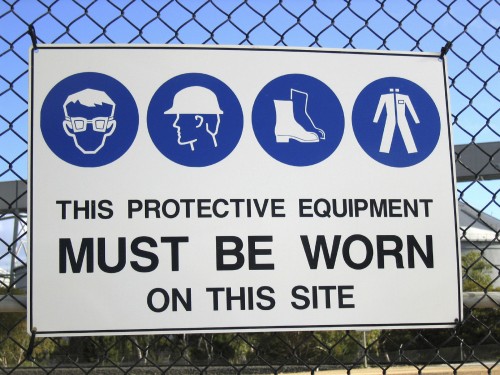Construction sites are potentially dangerous places, with lots of vehicles moving around, high places, hazardous chemicals and falling objects, not to mention tools, light radiation and tripping or slipping hazards. Most days at work on construction sites pass by without incident, but this should be due to good management and education through programs such as 360 Training’s OSHA 10 online training course, rather than good luck.

Everyone on a building site should do their part to keep themselves and their colleagues safe – that’s why there are so many safety signs on construction sites – so here’s a few tips on how to avoid the most common issues and problems.
Falls
Falling is one of the leading causes of worker fatalities on construction sites and most employers need to assess sites better and provide more worker protection.
Workers should also make themselves familiar with all the fall hazards on a site and never work anywhere where fall protection systems haven’t been installed. Fall arrest systems should be checked before each use to make sure they’re working properly. Employers should provide fall protection systems like guard rails, nets and personal fall arrest kits.
Scaffolds
Around two-thirds of construction workers work on scaffolds and are vulnerable to falling, electrocution and falling objects. They should wear hard hats, non-skid workboots and use tool lanyards; they should also avoid working on a scaffold when there’s mud, water or ice present on the scaffold.
Ladders
Ladders are a major cause of injuries and deaths, usually due to improper use. The ladders aren’t properly secured and workers are trying to carry up too many objects at once, for example. They need to maintain three points of contact – two feet and at least one hand at any one time – and ladders should be tied securely at the top and bottom. They should also be inspected every morning by a competent person and taken away if they are not fit for use.
Eyes and face
Workers must wear eye and face protection when working with hazardous materials like chemicals, molten metals, flying particles, acids or light radiation. When there’s flying particles involved, goggles with side protectors must be used. All eye and face protection must fit snugly and not impede movement; it should also be kept clean and in good repair. Any damaged equipment should be replaced.
Head injuries
Hard hats are a familiar sight at construction sites, where they protect workers against falling objects, electrical shocks and other impact injuries.
Wherever there’s a risk of being hit on the head, workers must wear hard hats. Realistically, on a construction site, this is everywhere, so it’s important that the hats are checked every day for wear and tear and replaced as soon as they show signs of damage.
Hazardous chemicals
Many construction sites and workplaces feature hazardous or toxic chemicals, such as asbestos, lead, silica or wood that will be cut or sanded, creating dust. There are also some building materials that contain toxic or hazardous chemicals like mercury, zinc or cadmium.
Workers should read the Material Safety Data Sheets (MSDS) before they handle any hazardous materials at the construction site. They should also wear the appropriate personal protective equipment (PPE) when working with the materials and should be able to safely clean up any spills if and when they happen.



